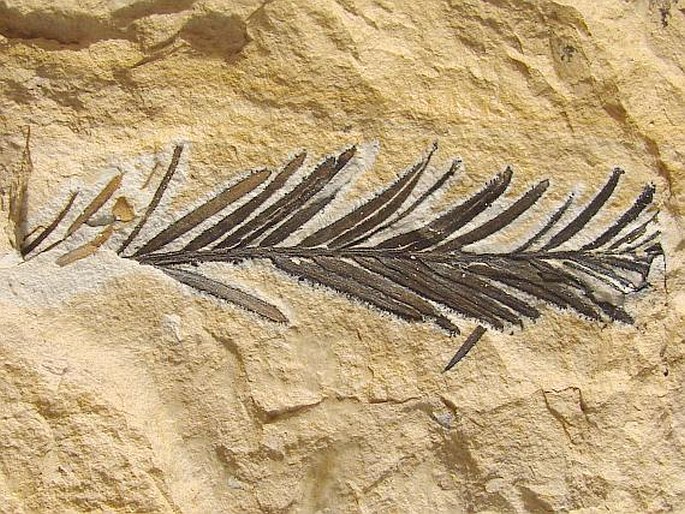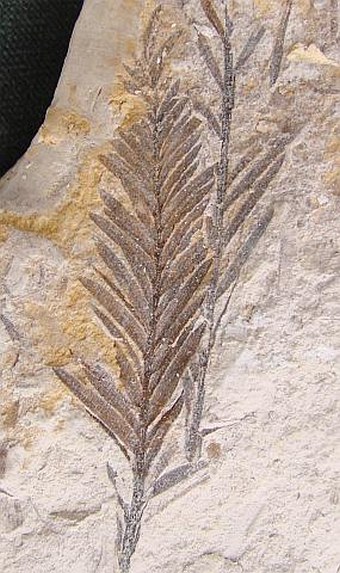Syn.: Phyllites dubius Sternb.
Family: Cupressaceae Bartl.; Taxodiaceae Warming

Distribution: Extinct Tertiary species, occurred in the period from the Late Cretaceous until the end of the Pliocene. It was widely distributed throughout the Northern Hemisphere, for example in Czechia in the Most Basin (North-Bohemian brown coal basin).
Ecology: It grew in marshy woods and along streams.
Description: The species was morphologically very similar to recent North American species Taxodium distichum. Fossil annual shoots are usually 6–15 cm long, needles alternate, in two rows, 8–13 mm long, probably were deciduous. The male cones were grouped into panicle-like clusters, which were 20–25 cm long, from female cones are found only individual scales, which are up to 1.5 cm long. Seeds are triangular, wingless. This species had also „breathing“ roots.
Note: The species was described by Czech aristocrat and naturalist Kaspar Maria von Sternberg in 1824 (as Phyllites dubius).



These fossils come from the opencast mine Bílina, Czechia (Miocene).


